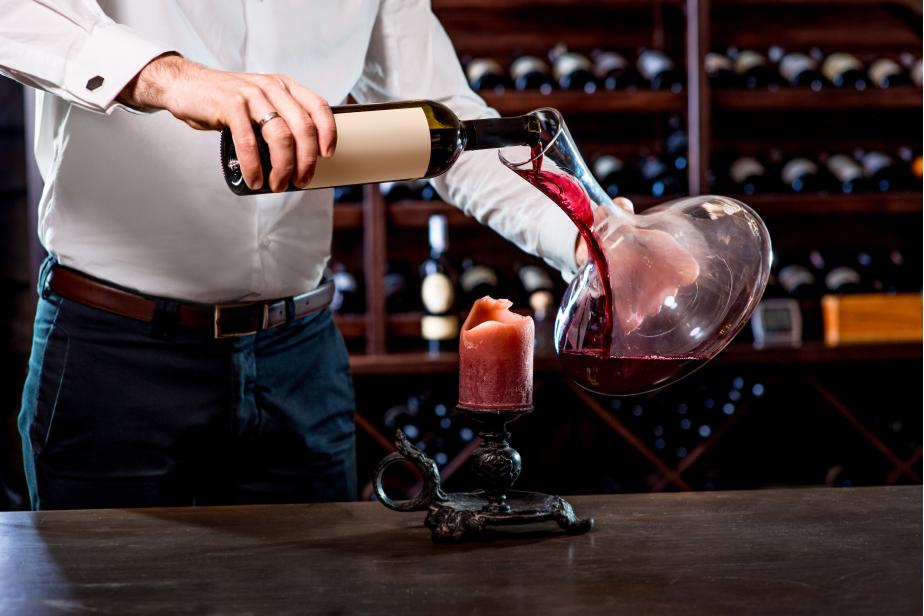
When you’ve found a stunning, aged bottle of red wine, white wine or rosé, the last thing you want is for the taste and aroma to be tainted by strong tannins and loose sediment. To avoid this, you need to decant your wine properly to get the best results and enjoy your delicious wine the way it was intended.
What is Wine Decanting?
Decanting wine is the process of pouring the wine from its original bottle to another one – usually made of glass – without disturbing the sediment gathered at the bottom of the bottle.
Does Wine Need to be Decanted?
Some view wine decanting as frivolous, but it serves a very important purpose, especially in the case of red wine, although both white wine and rosé can benefit from it. The first reason you should decant wine is to eradicate gritty sediment. It’s completely natural for wine to gather sediment as a by-product of the fermentation process, but you might find that it’s more prevalent in older, aged wine such as vintage port. Sediment has a sand-like texture and is made up of minuscule grape seed and skin particles, as well as tartrates (sometimes called ‘wine diamonds’, these are small, crystal-like clumps of tartaric acid that occur naturally in wines of all varieties). Sediment isn’t harmful, but it can make for an unpleasant texture.
In addition to separating unpleasant sediment from gorgeous, aged wine, decanting also aerates the wine which can enhance the flavour. When the wine is allowed to breathe as such, the exposure to oxygen refines and smooths out the flavours. Aerating is mostly useful for young red wines as they have a higher number of tannins.
Types of Wine Decanters
Decanting wine is relatively simple, although you will need to think about the type of decanter you use first and foremost. Wide neck decanters are ideal for aerating wine, so are great for young red wines but they are suitable for most other types, too. In comparison, thin neck decanters are mostly used in the case of separating sediment, although they can be troublesome to clean. Decanters can come in a range of sizes and decorative styles to suit all budgets – from the amateur, casual wine drinker through to the keen wine specialist.
Decanters should not be confused with carafes. The former serves a purpose with regards to enhancing the taste and drinking sensation of the wine, whilst the latter is purely used for serving wine in an aesthetic way.
How to Decant Wine
Once you’ve chosen a suitable decanter, decanting is actually a very simple process.
- If you store your wine horizontally on a wine rack, store it upright for at least a day before decanting it.
- After de-corking the bottle using a corkscrew, tip the neck of the bottle towards the decanter, maintaining a 45-degree angle at the bottom of the bottle to avoid unsettling the sediment.
- Pour the liquid slowly, using a light or a torch to highlight any loose sediment. If you do see loose sediment, stop pouring, let the wine settle and start again.
- Decant most of the wine, leaving only 15mm or so in the bottom of the bottle with the sediment.
How Long Can Wine be Decanted For?
You can decant wine hours before you intend on drinking it without the risk of the wine going bad. That being said, if you do intend to decant your wine, you should do so a minimum of 30 minutes before you intend to serve and enjoy it.
How to Store Decanted Wine
If you’ve decanted a bottle of wine but haven’t finished it in one sitting, you’ll want to store it for later. You can store it in the decanter provided you seal it with an airtight seal. If you don’t, it will over aerate and oxidize, ruining the taste. It should only be stored in the decanter for 2-3 days.
If you don’t want to store your wine in a decanter, you can pour it into a clean bottle and re-cork it.
Get in Touch
Before you decant your wine, you’ll need to store it properly on a wine rack. We have a wide range of wine racks available to buy online. If you can’t find exactly what you need online, or if you want more information on storing wine and our products, please get in touch.
 Designed and Manufactured in the UK
Designed and Manufactured in the UK 